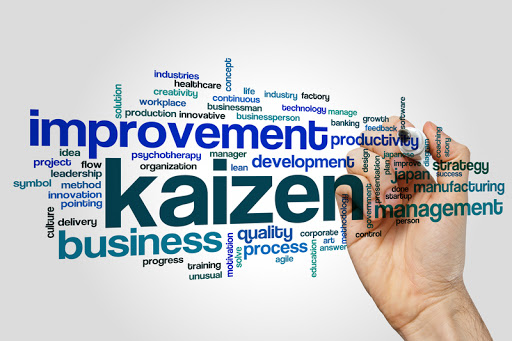Lean manufacturing makes use of various lean tools for improvement in production effectiveness and efficiency. The main goal of such an approach is to get the maximum output by making use of less time, less effort and fewer resources, that is, to create a Lean process. Continual improvement is an important part of every operation and the same can be achieved by applying the lean tools. Some of the commonly used Lean tools in manufacturing are as follows:
- Kaizen
- Poka-Yoke
- Jidoka
- Gemba
- Kanban
- Single Minute Exchange of Die (SMED)
- Total Productive Maintenance (TPM)
- Overall Equipment Effectiveness (OEE)
In this series, we shall be discussing each of the above mentioned tools one by one.
KAIZEN
‘Kaizen’ is a Japanese word for improvement which means small and incremental improvement on a continual pattern. It is better than a breakthrough improvement which is short lived and difficult to sustain. Kaizen is also commonly known as zero investment improvement. It can be practiced in service and manufacturing industries to improve the performance. Kaizen consists of 5 elements namely teamwork, personal discipline, improved morale, quality circles and suggestions for improvement.
Some forms of Kaizen are as follows:
- Flow Kaizen – It aims to improve the value stream of the process by focussing on the material and information flow. A better point of view is required to completely understand the entire process. Activities of the Flow Kaizen produce a Value Stream Mapping.
- Process Kaizen – It aims to eliminate the waste on the shop floor by focussing on the people and process flow. The employees/ supervisor’s responsibility is affected by Process Kaizen. A better understanding of the process details is required for Process Kaizen.
- Kaizen Blitz – This is a short term and rapid improvement process design to provide results on a short timescale. It is basically used for creative problem solving and process improvement method.
- Modular Kaizen – It is an improvement approach which incorporates quality techniques into busy schedule activities. This is considered complimentary with DMAIC model. It is a continuous and breakthrough improvement methodology.
- Office Kaizen – This is used for improvement in the office environments which emphasizes on the use of continuous improvement as its main strategy. 5S is commonly employed in Office Kaizen. It is an essential tool for cost saving in organizations and for increasing productivity.
Kaizen is a continuous improvement tool (may involve Just-in-time delivery, Quality Control, use of efficient equipment’s, standardised work, waste eliminations etc.) which makes the work environment more effective and efficient by promoting teamwork and ensures employee engagement in the everyday procedures, thus making the job more fulfilling and safer for the employees. The small changes create big future impacts on the organization.

.png
)
